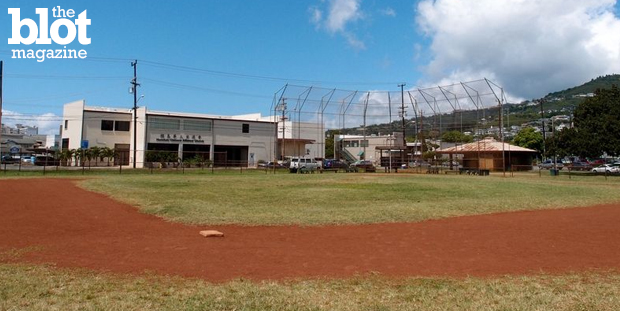
This is a particularly wonderful part of the sports year; the NFL hasn’t started yet, and the NBA and NHL have yet to recover from their playoffs. That means that, unless you watch third-rate games played by Major League Soccer, baseball is where the action is. The All-Star break is over, and the Los Angeles Dodgers are in first in their division (when I was a kid, we had two favorite teams in my family: the Dodgers and whoever was playing the Yankees that day). All is right with the world.
But Major League Baseball has a problem, a problem far worse than the stupid designated hitter rule. One million fewer kids ages 6-12 play organized baseball. The Sports & Industry Fitness Association (SFIA) says that number was 5.44 million in 2007 and 4.34 million last year. That’s a problem because the single biggest indicator of whether an adult will be a ticket- and merchandise-buying fan is whether said adult played baseball as a child.
The situation is so worrisome that MLB and the players’ union are spending $30 million to get kids back up to the plate through an initiative called “Play Ball.” “The purpose of the initiative is just to remind people that you can engage with baseball without having nine guys on each team, uniforms and umpires,” new MLB commissioner Rob Manfred said. “There are lots of small games that are ways to play baseball that can be really fun for kids and can really help them develop skills. The kids seemed to have a great day today. You see the excitement that’s generated when Major League players show up, and it creates a day that they’ll remember the rest of their lives.”
Read more: Bust Your Gut with These 10 Baseball Stadium Foods
When I was 8 or 9, my brother and I played baseball in the backyard every day in the summer. There was a spot where we had home plate where grass couldn’t grow — when Dad sold the house, we had to turn it into a flower patch to make it presentable. Sometimes a couple of the neighbor kids would come over, but we didn’t ever have 18 guys. Sure as hell weren’t any uniforms or umpires. We called our own balls and strikes (do-overs were limited). There were ghost runners, cross-outs and a limit on runs per inning (I was older and bigger — the limit was a nod to fairness). Other times, we played catch or a game we called “double-play,” which focused on infield skills.
That’s what MLB thinks it needs, kids playing games that aren’t exactly baseball but that create ball players. And it does need that. But it needs something else.
One of the greatest memories of my kid-hood was my first Major League baseball game. It was at Chavez Ravine, Dodger Stadium in L.A. We lived in the San Fernando Valley then, and I was 5. It was Bat Day. Every kid got a real wooden bat, a genuine Louisville Slugger. The field was the greenest grass I had ever seen, and there were more people there than lived in the town I where I was born. Dad got us Dodger Dogs and a frozen malt. Vin Scully was announcing on every transistor radio around us. The kids started banging the bats on the concrete at their feet in unison. The stadium announcer had to ask us to stop because no one listening on the radio could hear Scully’s play-by-play.
When we moved to Denver when I was 7, the Denver Bears were the AAA minor league club. They played in Mile High Stadium that seated 40,000 or 50,000; on a good night, they’d have 10,000. That meant you could sit just a few rows back for a few dollars. We’d go to half a dozen games a year.
That’s what MLB is missing now. Next month, I am headed to Shea (you can call it Citi Field if you want, but I don’t approve of the corporate sponsor name game), and to sit in the nosebleeds, four of us are spending $150. For four adults with jobs, that’s no big deal, really. But we’ll probably blow a bit on food and drinks, and $50 a head is not unlikely. For a young family, though, that’s a serious chunk of change. It was a serious amount of money before everyone got worried about having a job back in 2008. And funny how the drop off in youth baseball coincided with the drop off in jobs.
Read more: Benjamin Wey: 6 Ways Youth Sports Make Better Businesspeople
For my money, baseball is the ideal game — a combination of athletic prowess and strategic thinking. It is played from Taiwan to Trenton to Tamil Nadu. You don’t have to be a physical anomaly to be a star, and you don’t have to have anything more to play beyond a stick and a ball (stickball has died out on New York City streets, along with egg creams).
But as a business, the MLB is killing itself. The Brooklyn Dodgers fans were the rabid die-hards because the team lived in the neighborhood. The same applied to every ball club way back when. My generation was loyal to even the losing-est teams because Mom and Dad took us to see them regularly. And they did that because they could afford to.
Thanks to TV money and licensed merchandise, MBL could probably turn a profit even if it didn’t charge admission to the games. It doesn’t need to be that radical in its approach, but the $6 seats I had at Shea when I first came to New York in the 1980s would work.
The TV ratings and the merchandise sales will eventually drop if MLB doesn’t get those million kids back. Getting them to the ballpark is the best way to do it.
Jeff Myhre is a contributing journalist for TheBlot Magazine.





